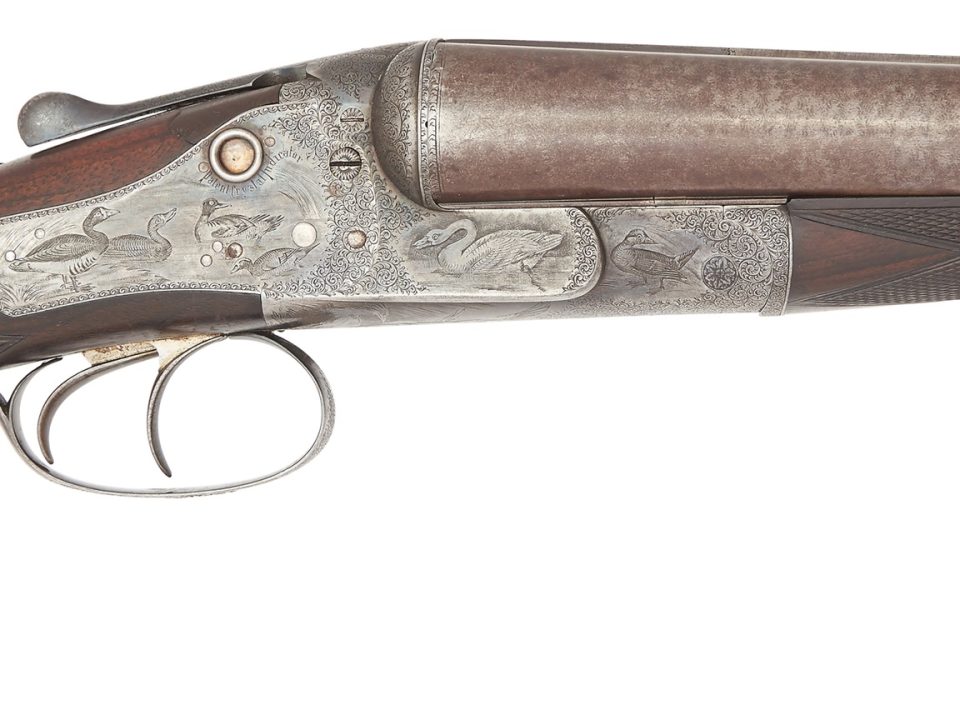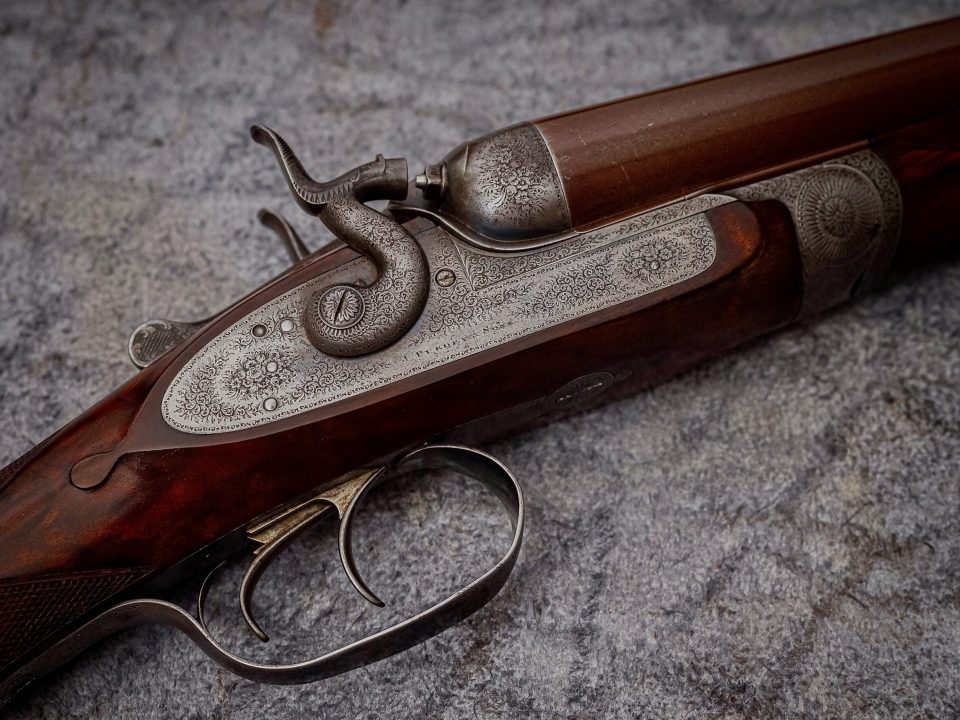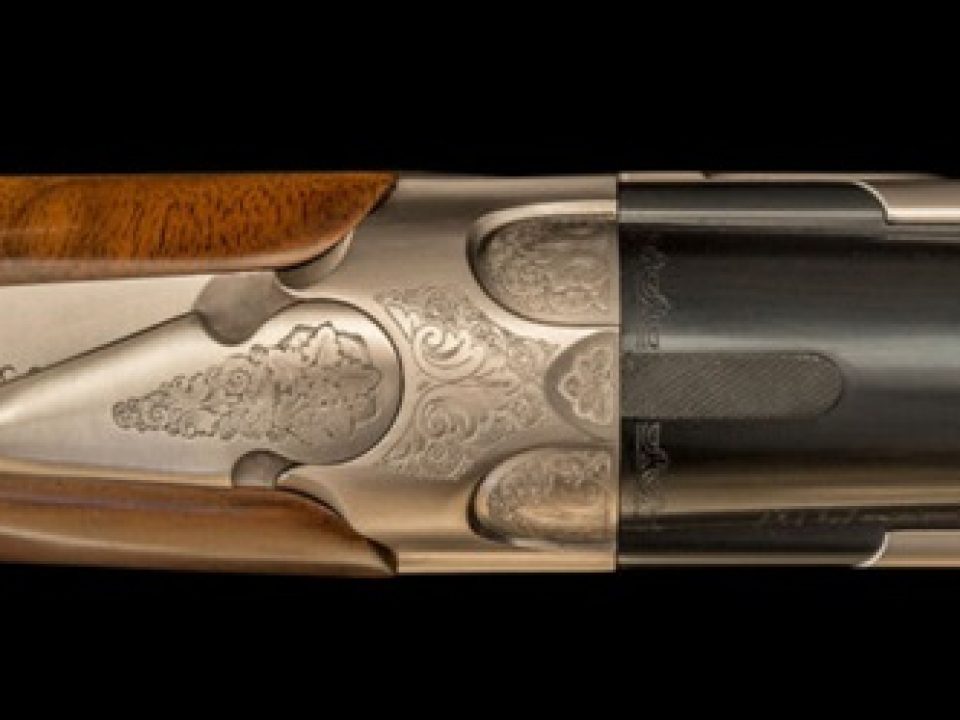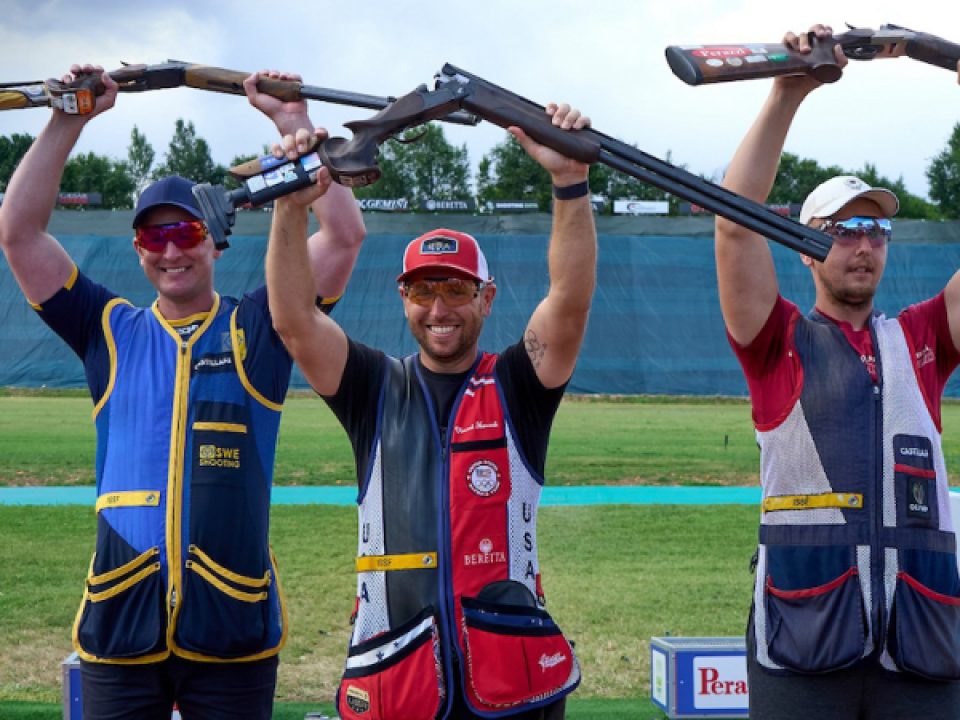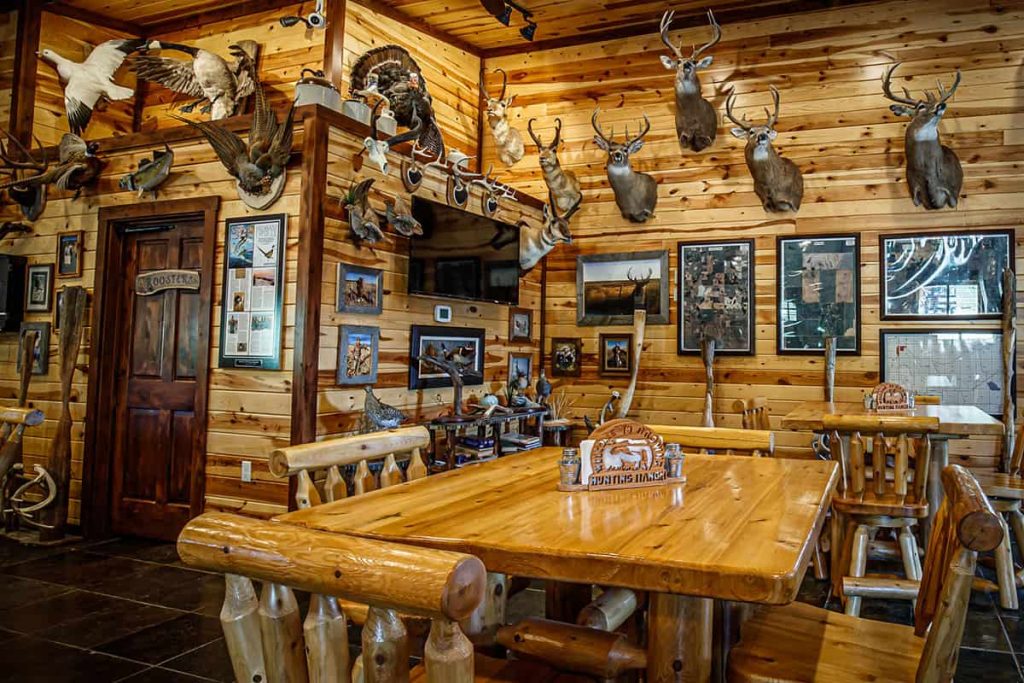The back action shotgun, known for its reliable design and smooth operation, has been a favorite among hunters and sportsmen for centuries.
Author: Shotgun Life Staff
How Does a Bar in Wood Shotgun Work?
When you mention a “bar-in-wood” shotgun, you’re referring to a particular style of shotgun design where the action body (the metal frame/receiver) is enclosed within the wooden stock, rather than sitting fully exposed as in more modern guns. This was most common in 19th-century British and Continental sporting guns. In a bar-in-wood gun, this bar is covered with wood so the stock and action appear more seamless. Only the hammers, triggers, and fences are exposed.
The Mechanics of a Wood Shotgun Bar
A wood shotgun bar is a long, cylindrical metal tube that houses the barrel and other essential parts of a shotgun. It serves as a guide for the shotgun shell to travel through during firing, directing the shot towards the target. The wood material used for the bar provides stability and support for the barrel, helping to absorb recoil and maintain accuracy.
The Advantages of a Ribless Shotgun for Upland Hunting
Ribless shotguns have gained popularity in recent years due to their sleek and minimalist design. By eliminating the rib along the top of the barrel, manufacturers are able to create a more streamlined and aesthetically pleasing firearm. This not only gives ribless shotguns a modern and stylish look but also reduces the overall weight of the gun, making it easier to handle and carry for extended periods of time.
Enhanced Maneuverability and Accuracy
One of the key advantages of a ribless shotgun is its enhanced maneuverability and accuracy. Without the rib obstructing your line of sight, you are able to acquire targets quickly and shoot with more precision. This is especially beneficial in fast-paced shooting sports or when hunting moving targets. The lack of a rib also reduces the amount of muzzle rise when firing, allowing for faster follow-up shots and improved overall performance.
Remembering the Remington Model 32 Shotgun
Remington Model 32 Shotgun is a classic firearm that has stood the test of time and holds a significant place in the history of shotguns. With its sleek design and exceptional performance, the Remington Model 32 has been a favorite among hunters, sports shooters, and collectors alike. Let’s delve into the rich history of this iconic shotgun.
The Beginnings of Remington Model 32 Shotgun
The story of the Remington Model 32 Shotgun dates back to the early 1930s when it was first introduced by the renowned firearms manufacturer, Remington Arms Company. Designed by C.C. Loomis, this over-and-under shotgun quickly gained popularity for its elegant appearance and reliable functionality. The Model 32 was initially marketed as a high-end competition shotgun, appealing to serious shooters looking for precision and quality in their firearms.
The Smith & Wesson 1000 Semi-Auto: A Forgotten American Legend?
The Smith & Wesson 1000 Shotgun made its debut in the 1970s, during a time when the company was looking to expand its product line beyond handguns. With its sleek design and reliable performance, the 1000 quickly gained popularity among hunters, sport shooters, and law enforcement agencies. Its unique gas-operated system set it apart from other shotguns on the market, making it a standout choice for those seeking a reliable and accurate firearm.

Uncovering the Origins of a Classic Firearm
The origins of the Smith & Wesson 1000 Shotgun can be traced back to a collaboration between the famous gun manufacturer and the renowned firearm designer Karl Lewis. Lewis, known for his innovative approach to firearm design, worked closely with Smith & Wesson to develop a shotgun that would meet the needs of both professional and recreational shooters. The result was the Smith & Wesson 1000, a weapon that combined cutting-edge technology with classic craftsmanship.
Evolution of the Smith & Wesson 1000: A Timeline
Over the years, the Smith & Wesson 1000 Shotgun has undergone several improvements and upgrades to keep up with the changing demands of the firearms industry. From enhancements to the gas system to modifications in the stock and barrel design, each iteration of the 1000 has been meticulously crafted to provide shooters with the best possible performance. Despite its evolution, the core features that make the Smith & Wesson 1000 a beloved firearm have remained consistent, earning it a well-deserved reputation as a reliable and accurate shotgun.
With its innovative design, reliable performance, and timeless appeal, the 1000 continues to be a favorite among shooters of all skill levels. Whether you are a seasoned collector or a novice enthusiast, the Smith & Wesson 1000 Shotgun is a must-have addition to any firearms collection.

Features and Variants
Design: The Model 1000 was a gas-operated semi-automatic shotgun, designed to compete with Remington’s 1100 and Winchester’s Super X Model 1 of the era.
Chamberings: Primarily 12 gauge and 20 gauge, with 2¾” chambers (later some were chambered for 3″).
Configurations:
Field models – for hunting and sporting use.
Trap and Skeet versions – specialized for clay target sports.
1000T (Trap) and 1000S (Skeet) were designated models.
Some deluxe grades with higher polish and engraving were also available.
Styling: Typically came with checkered walnut stocks, ventilated ribs, and interchangeable choke tubes in later models.
Market Reception
The 1000 earned a reputation for being well-made, reliable, and soft-shooting.
However, the shotgun market in the U.S. was dominated by Remington, Winchester, and Browning, and Smith & Wesson struggled to gain a foothold.
By the mid-1980s, Smith & Wesson discontinued the line.
# # #
Joshua Creek Ranch Announces Shooting Sportsman’s “Hunt with the Magazine” for Dec. 4-8, 2025
Just after Thanksgiving we head to Joshua Creek Ranch, in Boerne, Texas. This legendary wingshooting destination is located in the heart of Hill Country and has countless awards and accolades to its name. The trip will be hosted by Terry Bombeke, and hunters will fly into San Antonio on December 4, 2025, and enjoy four walk-up hunts for pheasants, bobwhite quail and chukar as well as two high-bird driven-style shoots before departing on December 8. The $9,950 price includes 14 boxes of shells along with single-occupancy lodging, meals, most alcohol, licenses, taxes, gratuities, bird processing and ground transportation. (Super-premium bar selections and the cost of shipping birds home are extra.)
From Olympic Legends to Rising Stars, U.S. Shotgun Athletes Dominate 2025 Season
In Lonato, Italy, the American flag rose above the podium — not once, but twice — as the national anthem played for Team USA’s gold medals in both Men’s and Women’s Skeet. It was a defining moment in a season already filled with victories, one that showcased the pride, skill, and determination driving the U.S. Shotgun Team to new heights in 2025.
With 34 international medals already secured before the World Championships begin, the U.S. shotgun team has shown unmatched depth, consistency, and dominance on the global stage. And with two major competitions still ahead, they are poised to further cement their reputation as one of the most formidable forces in the sport.
Double Trigger vs. Single Trigger for Sporting Shotguns
When it comes to choosing a sporting shotgun, one important decision that shooters must make is whether to opt for a double trigger or single trigger model. Both options have their own set of advantages and drawbacks, and understanding the differences between the two can help individuals make an informed decision based on their shooting preferences and needs.
Understanding the Difference: Double Trigger vs. Single Trigger
The primary difference between double trigger and single trigger shotguns lies in the mechanism used to fire the gun. Double trigger shotguns, as the name suggests, have two triggers – one for each barrel. This setup allows shooters to select which barrel they want to fire first, providing more control over shot placement and allowing for a quicker follow-up shot. On the other hand, single trigger shotguns have only one trigger that alternates between firing the barrels, making them more streamlined and user-friendly for shooters who prefer simplicity.
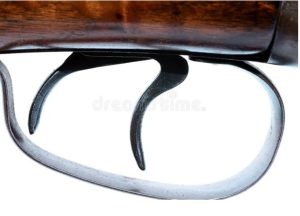
Benefits and Drawbacks of Double Trigger Shotguns
One of the main benefits of double trigger shotguns is the ability to independently select which barrel to fire first. This can be advantageous in sporting situations where different targets require different shot patterns or distances. Additionally, some shooters find that having two triggers provides a more tactile and intuitive shooting experience. However, double trigger shotguns can be bulkier and more complex to operate compared to single trigger models, which may not appeal to all shooters.
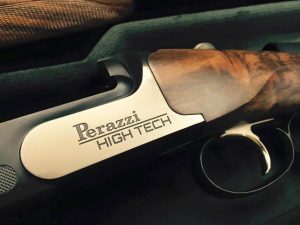
Advantages of Single Trigger Shotguns for Sporting Use
Single trigger shotguns are popular among sporting shooters for their simplicity and ease of use. With only one trigger to pull, shooters can focus on their target without the distraction of choosing between barrels. Single trigger shotguns also tend to have a smoother and lighter trigger pull, which can contribute to improved accuracy and faster follow-up shots. Additionally, the streamlined design of single trigger shotguns makes them more compact and lightweight, ideal for shooters who value mobility and agility in the field.
Ultimately, the choice between a double trigger and single trigger shotgun comes down to personal preference and shooting style.
Single Trigger
- Pros:
- Quick Second Shot: Automatically fires the second barrel upon a second trigger pull, or requires a simple, optional selector switch to be moved.
- Simplicity: A simpler system to operate than a double-trigger system for some shooters.
- Quick Second Shot: Automatically fires the second barrel upon a second trigger pull, or requires a simple, optional selector switch to be moved.
- Cons:
- Complexity: The internal mechanism is more complex than a double trigger system.
- Potential for Accidental “Doubling”: The shooter may accidentally pull the trigger twice during recoil, leading to an unplanned shot from the second barrel.
- Complexity: The internal mechanism is more complex than a double trigger system.
Double Trigger
- Pros:
- Choke Selection: Offers instantaneous selection of the choke for each barrel.
- Reliability (Historical): Traditionally considered more reliable, though this is less of an advantage with modern designs.
- Tradition: It’s a traditional design favored by many experienced hunters for its simplicity and direct control.
- Choke Selection: Offers instantaneous selection of the choke for each barrel.
- Cons:
- Slower Second Shot: A second trigger pull is needed for the second barrel, which is less quick than a single-trigger system.
- Physical Movement: May require more physical movement from the shooter to switch barrels, making it less ideal for quick follow-up shots.
- Slower Second Shot: A second trigger pull is needed for the second barrel, which is less quick than a single-trigger system.
Which to Choose?
Brown’s Lodge & Hunting Ranch – South Dakota Pheasant Hunting & Fishing
Located on the banks of Lake Oahe and the Missouri River, Brown’s Lodge & Hunting Ranch offers the ultimate outdoor experience in South Dakota hunting and fishing. All-inclusive packages combine world-class hunting, guided fishing, and first-class accommodations for an unforgettable adventure.
All-Inclusive South Dakota Hunting Packages
Wild Pheasant & Upland Bird Hunting – Hunt across thousands of acres of private land carefully managed for prime pheasant habitat. Enjoy expert guides, seasoned bird dogs, and classic South Dakota hunting traditions.
Prairie Dog Hunting in South Dakota – High-volume varmint hunting on wide-open prairie lands, perfect for sharpshooters seeking a fast-paced challenge.
Premier Lake Oahe Fishing Trips
Fish the Missouri River and Lake Oahe for trophy walleye, smallmouth bass, northern pike and more. Guided fishing trips are tailored for beginners and seasoned anglers alike, with everything provided for a stress-free experience. Visit https://www.shotgunlife.com/go/thkk
How to Measure the Trigger Pull Weight of a Shotgun
When it comes to shooting sports, the trigger pull weight of a shotgun can greatly impact the accuracy and performance of the shooter. Understanding how to measure and adjust the trigger pull weight is essential for ensuring a comfortable and consistent shooting experience. In this article, we will discuss the importance of measuring trigger pull weight, the tools needed for the job, and provide a step-by-step guide on how to accurately measure the trigger pull weight of a shotgun.
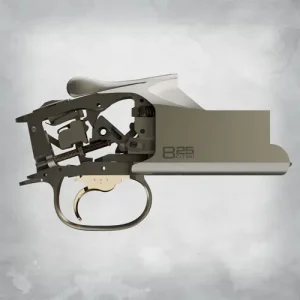
Understanding the Importance of Measuring Trigger Pull Weight
The trigger pull weight of a shotgun refers to the amount of force required to pull the trigger and discharge a round. A heavier trigger pull weight can make it more difficult for a shooter to accurately aim and fire their weapon, while a lighter trigger pull weight can result in unintentional discharges. By measuring and adjusting the trigger pull weight to a level that is comfortable and appropriate for the shooter, they can improve their accuracy and control over their firearm.
Tools Needed to Measure Trigger Pull Weight of a Shotgun
To accurately measure the trigger pull weight of a shotgun, you will need a trigger pull gauge. This tool is specifically designed to measure the amount of force required to pull the trigger. Additionally, you may need a small screwdriver or Allen key to make any necessary adjustments to the trigger pull weight. It is important to use a high-quality trigger pull gauge to ensure accurate and reliable measurements.
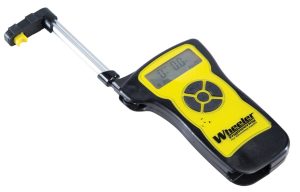
Step-by-Step Guide to Accurately Measure Trigger Pull Weight
- Ensure the shotgun is unloaded and pointed in a safe direction.
- Attach the trigger pull gauge to the trigger of the shotgun.
- Slowly pull the trigger until it releases, taking note of the reading on the gauge.
- Repeat this process multiple times to get an average reading.
- If adjustments are needed, refer to the shotgun’s manual for instructions on how to adjust the trigger pull weight using the screwdriver or Allen key.
Measuring the trigger pull weight of a shotgun is a crucial step in ensuring a safe and effective shooting experience. By understanding the importance of trigger pull weight, having the necessary tools, and following a step-by-step guide, shooters can make adjustments to achieve a trigger pull weight that is comfortable and conducive to accurate shooting. Remember to always prioritize safety when handling firearms and consult a professional gunsmith if you are unsure about making adjustments to your shotgun’s trigger pull weight.
# # #
Shotgun Life Newsletters
Join an elite group of readers who receive their FREE e-letter every week from Shotgun Life. These readers gain a competitive advantage from the valuable advice delivered directly to their inbox. You'll discover ways to improve your shooting, learn about the best new products and how to easily maintain your shotgun so it's always reliable. If you strive to be a better shooter, then our FREE e-letters are for you.
About Shotgun Life
Shotgun Life is the first online magazine devoted to the great people who participate in the shotgun sports.
Our goal is to provide you with the best coverage in wing and clays shooting. That includes places to shoot, ways to improve your shooting and the latest new products. Everything you need to know about the shotgun sports is a mouse-click away.
Contact
Irwin Greenstein
Publisher
Shotgun Life
PO Box 6423
Thomasville, GA 31758
Phone: 229-236-1632

